Accessibility Tools for Contrast and Color Blindness When Dealing with Text and Graphics – Preparation for Creating a Logo and Infographics-3
Before you save the library on the right side, you will be alerted if the theme is or is not color blind safe.
You will see the three main types of color blindness, using the color blind simulator: deuteranopia, protanopia, and tritanopia. Though color blindness only affects roughly 8% of the population, more men than women, it’s good to make sure your design is easily readable and accessible to all. So continue to move the sliders around to adjust if you want your colors to be color blind safe if this is critical to your work.
Note Vision is a key factor in how color is perceived by our brain. For normal-sighted people, as we age, the lens in the eye begins to yellow, and this may be due to cataracts or macular degeneration. In some cases, the lens can be removed and replaced, and then the individual can once again see true whites. Refer to Figure 2-58.
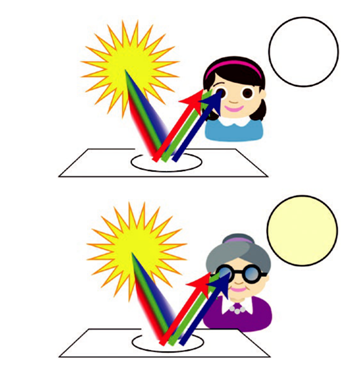
Figure 2-58. Illustration about how as eyes age we do not see color the same
However, this is not the case with a person who is color blind. It does not mean that they are actually blind, only that they have trouble distinguishing between certain colors that a normal-sighted person can easily see. In some cases, the person is born this way due to genetics or some trauma, with faulty or inactive photoreceptor cells, known as cones, found in the area of the retina. The ones that control our night vision are known as rods. Cones come in three types known as red (long-wavelength), green (medium-wavelength), and blue (short-wavelength). As light passes through the pupil, it hits the retina and activates the receptors and then the rods and cones. Refer to Figure 2-59.
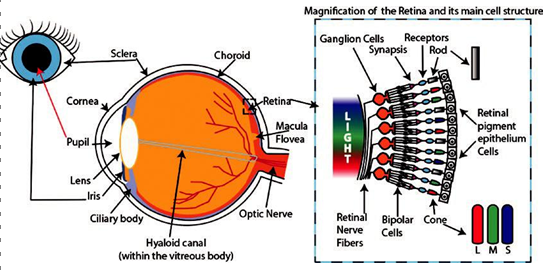
Figure 2-59. An illustrated eye diagram showing where color receptors rods and cones are located
If all the red receptors fail to work, this is called protanopia. Refer to Figure 2-60.
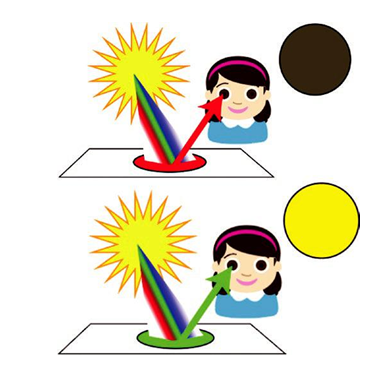
Figure 2-60. Illustration of how protanopia would affect someone seeing red and green
When green receptors fail, this is known as deuteranopia. Refer to Figure 2-61.
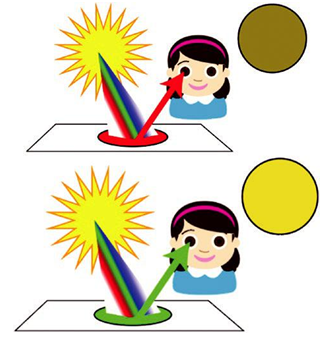
Figure 2-61. Illustration of how deuteranopia would affect someone seeing red and green
If blue receptors fail, it is called tritanopia. This person may be OK with red, but green or yellow may not come to the eye accurately. Refer to Figure 2-62.
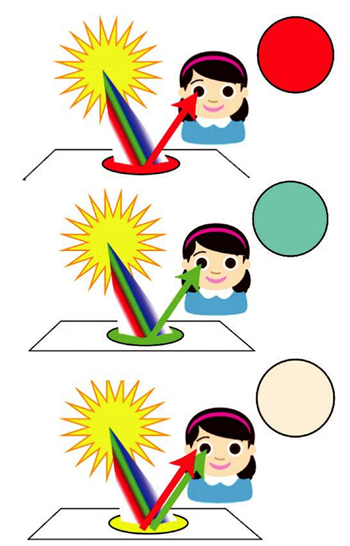
Figure 2-62. Illustration of how tritanopia would affect someone seeing red, green, and yellow
When all cones fail, and the rods are all the eye relies on, which is rare, this is called rod monochromacy (achromatopsia). High and low contrast colors would definitely be important to check for this individual. Refer to Figure 2-63.

Figure 2-63. Illustration of how rod monochromacy would affect someone seeing red and green
In some cases, a person may have only partial color blindness, and some of their cone receptors continue to function. Nevertheless, it will affect how they see color. If color correctness is crucial to your job and people tell you you’re having difficulty distinguishing colors, it might be a good idea to consult your doctor if you need your eyes tested for color blindness.
Note In these current examples, we are looking at the printed colors of red, green, and yellow based on a CMYK to emulate RGB on paper. However, keep in mind that the interpretation of actual pure red, green, and blue on a monitor may appear different than pigment inks, and color accuracy will vary even for the color-blind person.
Tip Photoshop and Illustrator also have viewing and proofing options for testing at least two types of color blindness if you are working in the application.
For Photoshop and Illustrator, refer to the menu:
View ➤ Proof Setup ➤ Color Blindness
